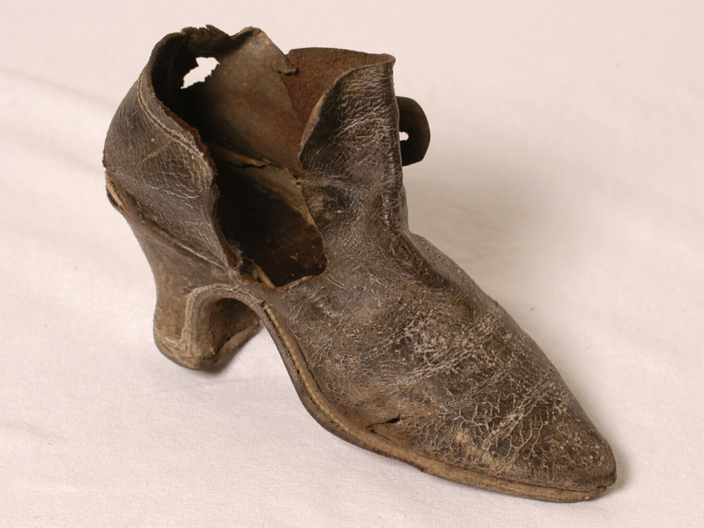Cabinet of Curiosities
Our curatorial team have delved into the Cabinet of Curiosities to bring you some unusual objects from our collection.
Elephant tooth
This Asian Elephant’s tooth was found in a shed and donated to the museum.
Elephants usually have 26 teeth. They consist of 2 incisors (or tusks), 12 deciduous premolars (milk teeth), and 12 molars.
Their chewing teeth are replaced six times in their lifetime.
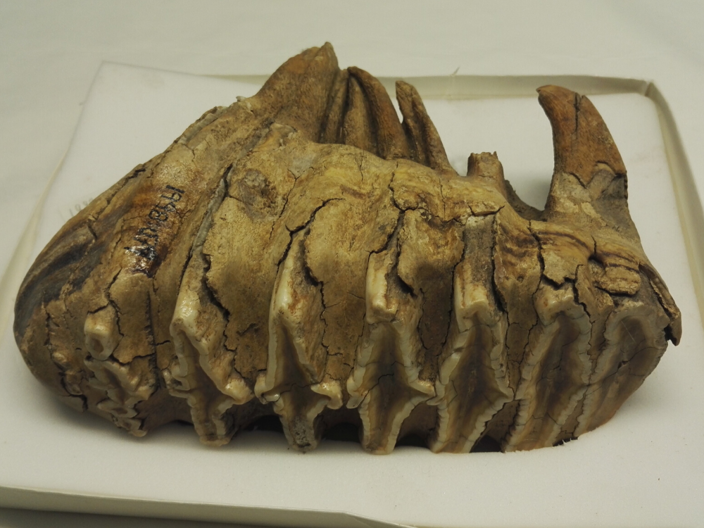
Coco de mer
What you are looking at is the largest seed in the plant kingdom!
It comes from the coco de mer palm which grows in the Seychelles. The fruit from the tree often falls into the sea, washing up on foreign beaches.
The enormous seeds were highly prized. Locals who found them believed they grew on mythical trees beneath the Indian Ocean and possessed great healing powers.
Did you know that coco de mer simply means ‘sea coconut’?
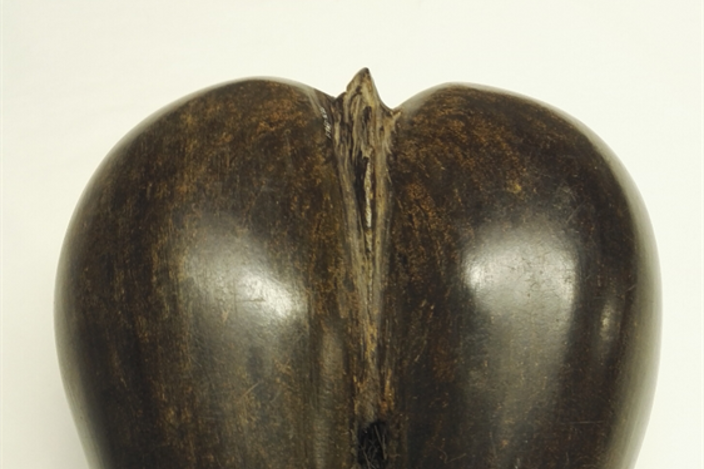
Cat skeleton
Did you know that cats:
- were worshipped by the Egyptians and it is believed they first arrived in Britain with the Romans
- spend up to 16 hours a day sleeping
- use their whiskers to measure tight spaces
A group of cats is called a ‘clowder’.
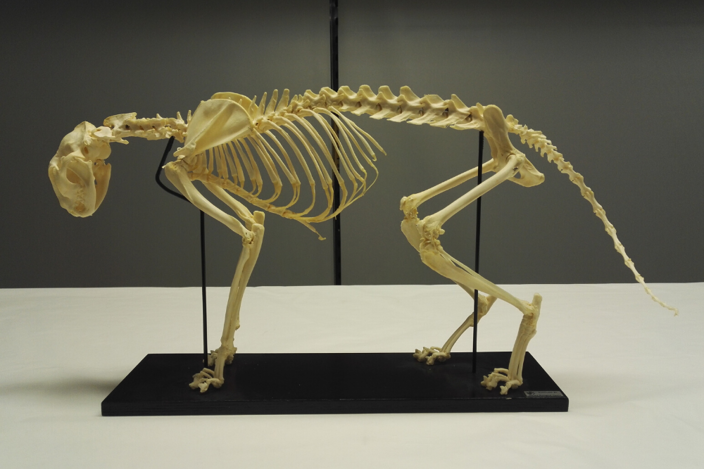
Ammonite
This is a fossil of an ammonite which lived in the seas between 240 and 65 million years ago!
Ammonites are a type of marine mollusc that became extinct with the dinosaurs.
Their fossils are easily found on the coast because of their noticeable spiral shape.

Hawksbill Turtle
The Hawksbill Turtle can be found in the world’s tropical oceans. Adult turtles can grow up to a metre in length and weigh around 80kg.
Sadly, they are now critically endangered. They were hunted for their patterned shells which were made into highly decorative objects, such as combs, small boxes, glasses frames and guitar picks.
Did you know the Hawksbill Turtle was given its name because its mouth ends in a sharp point, like the beak of a bird?
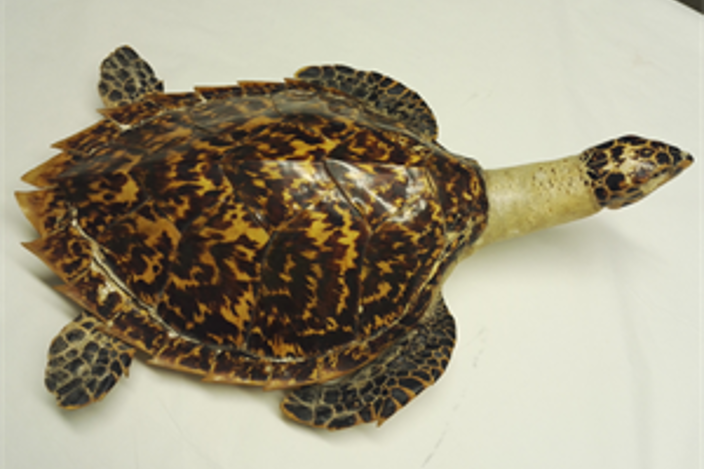
Bellarmine jug
Stoneware beer jugs, such as this one, were called Bellarmines after Cardinal Bellarmine, whose grotesque bearded face was stamped on the front.
They were used as ‘witch bottles’ in the 16th and 17th centuries to repel curses cast by witches.
Households would place urine, hair, nail clippings and iron nails in a bottle to ‘confuse’ the witches spell, drawing her curse into the bottle where it would be pierced by the iron nails!
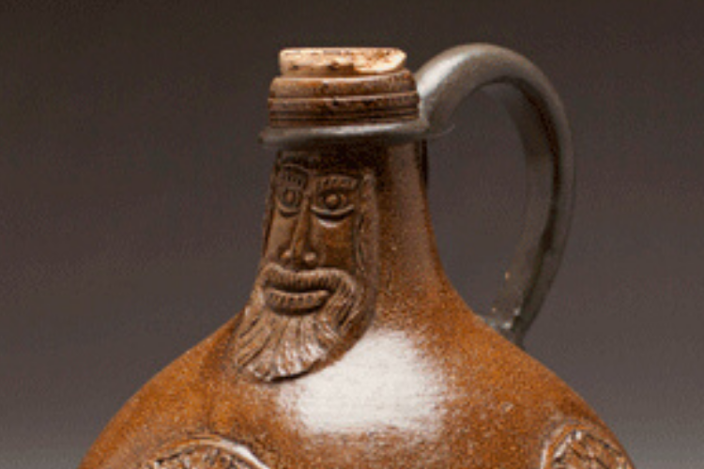
Megalodon tooth
This fierce looking tooth was found along the coast of Walton-on-the-Naze.
It came from a Megalodon, a species of shark that became extinct 2.6 million years ago. Related to the Great White Shark, it is believed to be the largest shark that ever lived. Size estimates vary, but evidence suggests the average Megalodon was between 10 to 18 meters long, with some growing even larger!
One thing we do know, if you get into the water with one of these, you’re gonna need a bigger boat.
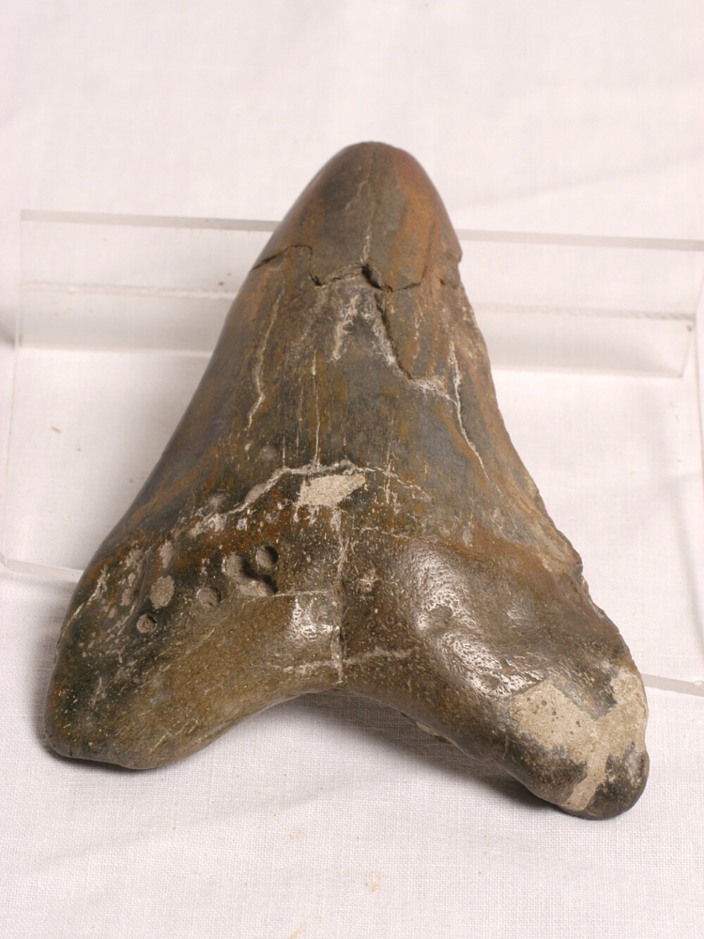
Elephant foot
Elephant feet were very popular in the Victorian era as household furniture. Many were used as umbrella/cane stands. This one is described in our museum catalogue as “Waste Paper Basket”.
An inscription on it tells us that is was sold from ‘The Jungle’, a shop in Piccadilly that was owned by the great taxidermist Rowland Ward.
Did you know that despite being so big, elephants move quietly because their feet have inbuilt shock absorbers.
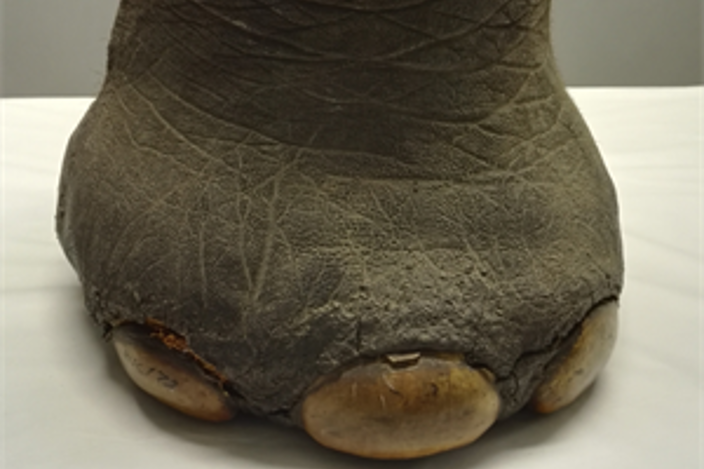
Brittle star
This alien-looking creature is a Brittle Star, sometimes referred to as the ‘Serpent Star’. A relative of the star fish, they use their long arms to propel themselves along the sea floor.
The mouth can be found on the underside of the body – they have FIVE jaws. Brittle Stars are scavengers; they use their arms to capture organic deposits floating in the water, which they pass into their mouths.
They have the power to regenerate, which is fortunate, because their arms are very delicate and easily broken.
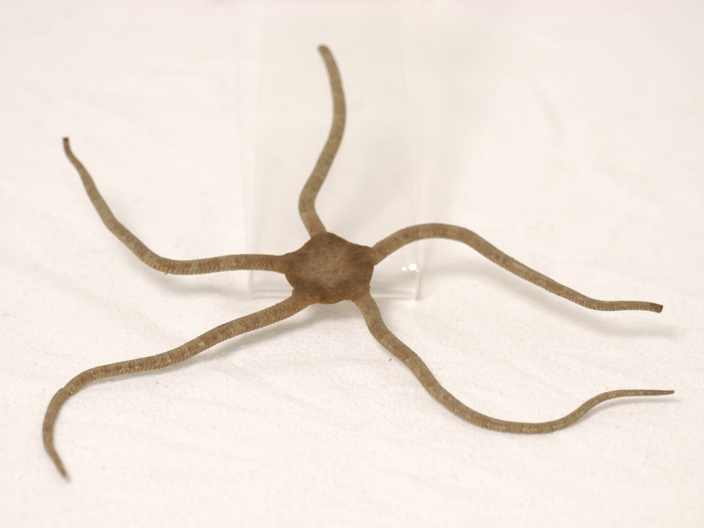
Dior hat
This beaded pillbox hat was made by Dior in the early 1960s.
The Dior fashion house was founded in 1946 by the designer Christian Dior. The designer became famous for the iconic shapes and silhouettes that gave his models a curvy appearance.
At first, his designs were criticised for the liberal amounts of fabric they used. During World War II, fashion designers, like everyone else, were asked to conserve fabric, which was often rationed. Post war, his designs were viewed as a welcome change from the boxy and unflattering war-time styles.
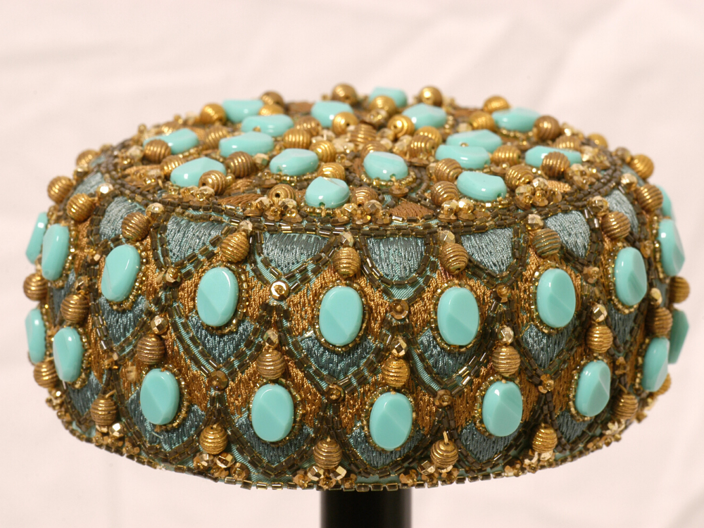
Spider crab
This is a dry specimen of a European spider crab. They are known for their large size (this one is 22cm with leg spread). Their orange spiny shells may look scary, but it catches on algae, making them look green and furry- a useful disguise! European Spider crabs prefer warmer waters so are often found in the Mediterranean Sea.
Spider crabs undertake an annual migration into deeper waters in the Autumn, sometimes travelling over 100 miles in total on their outwards and return journeys.

Hidden shoe
This dusty and faded shoe was found hidden in the chimney of a farmhouse. It dates to the 17th century, when concealing objects in the walls of the home was believed to protect the inhabitants from evil spirits.
Belief in the existence of witches was common in 17th century Essex. The famous Witchfinder General, Matthew Hopkins, searched the county for alleged witches and frequently subjected women to physical and psychological torture to get them to confess.
In 1645, 15 women were tried and executed for the crime of witchcraft in Chelmsford.
